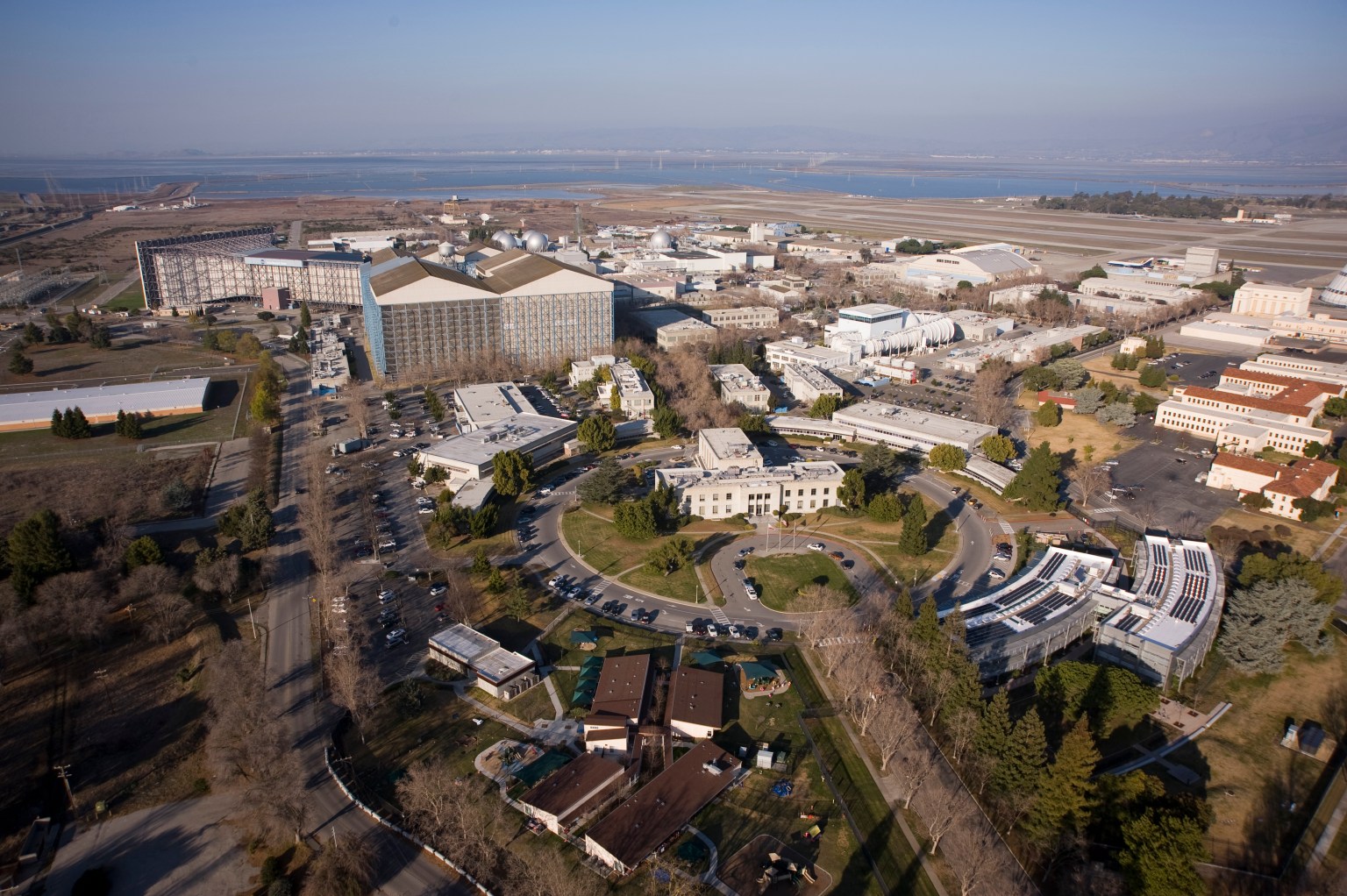2023 Summer Seminar Series
The NASA Ames Office of the Chief Scientist is pleased to announce the 2023 NASA Summer Series! The 2023 Series consists of 10 seminars highlighting Ames Research Center’s diverse capabilities and expertise in multiple subject areas such as entry systems, wildfire management, astrobiology, and engineering systems.
 |
Jeremy Frank
Artificial Intelligence: Powering Human Spaceflight Exploration of the Moon and Mars
Abstract:
The NASA Autonomous Systems and Operations (ASO) project has developed and demonstrated numerous autonomy enabling technologies employing Artificial Intelligence (AI) techniques. Our work has employed AI in three distinct ways to enable autonomous mission operations capabilities. Crew Autonomy gives astronauts tools to operate space vehicles or systems without assistance from Mission Control. Vehicle System Management uses AI techniques to turn the astronaut’s spacecraft into a robot, allowing it to operate when astronauts are not present, or to reduce astronaut workload. AI technology also enables Autonomous Robots to act as crew assistants or proxies when the crew are not present. In this seminar, we first describe human spaceflight mission operations functions, and classify these functions as monitoring, planning, plan execution, and fault management. We describe the wide range of development and demonstration activities performed by ASO since 2011. We describe the AI techniques behind each of these demonstrations, which include a variety of symbolic automated reasoning and machine learning based approaches. Finally, we conclude with an assessment of these demonstrations, motivating future development needs for AI to enable NASA’s future Exploration missions.
Biography:
Dr. Jeremy Frank is the Group Lead of Planning and Scheduling Group, in the Intelligent Systems Division, at NASA Ames Research Center. He received his Ph. D. from the Department of Computer Science, at the University of California at Davis, in June 1997. He also has a B.A. in Mathematics from Pomona College. Dr. Frank’s work involves the development of automated planning and scheduling systems for use in space mission operations, the integration of technologies for planning, plan execution, and fault detection for space applications, and the development of technology to enable astronauts to autonomously operate spacecraft. Dr. Frank has published over 70 conference papers and magazine articles, 10 journal papers, and three book chapters, and received over 40 NASA awards, including the Exceptional Achievement Medal, the Silver Snoopy, and the NASA Engineering and Safety Center Award.
Lauren Sanders
Future of Space Biology and Biomedical Advancements for Deep Space Exploration
Abstract:
As humans venture beyond low earth orbit into deep space, they will need to embark on lengthy and prolonged missions. To make this possible, space biology research is being conducted to understand the effects of space environments on living organisms. Computational and modeling approaches are being used to deepen the biological understanding of spaceflight and facilitate predictive modeling and analytics. Multi-modal NASA space biology data have been used to model the effects of spaceflight on mammalian muscle physiology, resulting in the identification of novel molecular targets and networks to advance our understanding of muscle atrophy during space travel. Large predictive models are designed to incorporate terrestrial biomedical knowledge bases to enhance space biological predictions. Standardized training datasets have been created from public NASA data and made available in cloud-based repositories. In this emerging field, computational and modeling approaches can support automated and reproducible experiments and efficiently manage spaceborne data and metadata to support NASA’s goals of open science. Strategic funding is necessary to develop automated, light, agile, and intelligent terrestrial capabilities to accelerate biological experimental platforms, spacecraft ecosystems, habitats, and health support systems. Humanity can thrive in deep space by integrating biomonitoring approaches, biomarker science, spacecraft and habitat hardware, intelligent software, and streamlined data management tools.
Biography:
Dr. Lauren Sanders is a staff scientist with Blue Marble Space supporting the NASA GeneLab project as the acting project scientist. GeneLab is a public data repository for spaceflight and space-relevant biological ‘omics data, which recently merged with the Ames Life Sciences Data Archive to form the Open Science Data Repository. During her time at NASA Ames, she has also supported the GeneLab Data Processing team and helped lead the Artificial Intelligence for Life in Space (AI4LS) working group which focuses on using artificial intelligence, machine learning, and space biological data to characterize risks to human health from spaceflight travel. Dr. Sanders holds a Ph.D. in Biomolecular Engineering and Bioinformatics from University of California, Santa Cruz, where her research focused on multi-omic analyses of cancer data and 3D organoid research on the developmental origins of childhood brain cancers.
Jessica Koehne
In-Space Manufacturing of Sensors and Electronics for Human Spaceflight
Abstract:
As human spaceflight pushes beyond Low Earth Orbit (LEO), resupply of consumables becomes a significant challenge. One solution to this problem is In-Space Manufacturing (ISM), the capability to perform on-demand manufacturing and repair of consumables in an in-space environment. ISM offers significant flexibility to missions as it allows for a high degree of tailorability and reduction in launch mass. Leveraging advancements in fabrication, repair and recycling, ISM provides a highly sustainable and affordable solution to exploration mission operations and logistics. In this talk, advances in printed electronics and sensors, ranging from nanomaterial ink development and hands-free fabrication methodologies to devices will be presented. Applications presented will include sensors for crew health monitoring along with supporting electronics. In the future, these devices will be fabricated and characterized on the International Space Station and the approach will be evaluated for future in-space manufacturing to support human spaceflight.
Biography:
Dr. Jessica E. Koehne is a Scientist in the Microfluidics and Instrumentation Branch at NASA Ames Research Center. She received a Ph.D. in Analytical Chemistry from the University of California, Davis in 2009. She has spent the past 22 years developing carbon nanofiber, carbon nanotube and graphene-based electrochemical sensor platforms for the detection of nucleic acids, proteins, and other small molecules, with applications ranging from point-of-care for astronaut health monitoring to the detection of life signatures for planetary exploration. With significant experience in device fabrication, including nanomaterial growth and integration, surface chemistry, electrochemical characterization and sensor validation, she currently leads the NASA Ames On-Demand Manufacture of Electronics team. Dr. Koehne received numerous honors and awards including the 2011 Presidential Early Career Award for Scientists and Engineers (PECASE) and 2018 Women in Aerospace Achievement Award. She serves as an Executive Committee member of the Electrochemical Society’s Sensor Division, has served on several Ph.D. thesis committees and is an Adjunct Graduate Faculty member at Boise State University.
Christine Gregg
Digital Materials: In-Space Assembly for Space Infrastructure
Abstract:
NASA’s envisions a sustained and thriving cislunar economy that can fuel not only technological and scientific advances, but also propel humanity to Mars and beyond. However, sustained human presence and industry requires infrastructure—roads, shelters, communication towers, power, orbiting stations, and more. The challenges of the supply chain from Earth, communication blackouts/delays, and the extreme environment require unique solutions that prioritize re-usability, versatility, autonomy, and repairability. To address these needs, NASA Ames is leading an effort to extend the concept of programmable matter, material that can autonomously adapt to any need or environment, to high-performance space systems. The system is based on the concept of discrete or ‘digital’ materials which are assembled from a small number of unique building block types, combined to achieve diverse functionality. To provide programmability, adaptability, and scalability, these materials are assembled and reconfigure autonomously by robots that locomote in and on the structures. Together, the robots and discrete structure form a versatile, scalable, and fully autonomous infrastructure system that can meet future space needs.
Biography:
Christine Gregg is a researcher in the NASA Ames Intelligent Systems Division. She studied mechanical engineering at the University of Delaware before receiving a master’s and doctorate in mechanical engineering from the University of California Berkeley. She was a NASA Space Technologies Research Fellow and Chancellor’s Fellow. Over the course of her career, she has researched fiber composite materials, acoustics, vibrational energy harvesting, dynamics, lattice materials, structures, fracture mechanics, and robotics. She currently serves as chief engineer of the ARMADAS project, a Game Changing Development project to demonstrate a programmable matter approach to autonomous robotic assembly of on-orbit and surface structures.
Derek Dalle
NASA’s Use of Supercomputing in the Artemis Program
Abstract:
NASA has one of the world’s largest supercomputing centers, located right here at NASA Ames, and one of the world’s most exciting programs in the Artemis program. How is supercomputing used in support of Artemis at NASA? How does that compare to the Apollo program? Is computational modeling really necessary for exploration if NASA did something similar in the 1960s? These questions are fun but certainly too hard to answer in one seminar! Nonetheless, Derek will share some of the ways that NASA groups use computational modeling to support Orion, Space Launch System, and Exploration Ground Systems. While most of an Artemis mission is spent in space, the beginning and end include a rapid traverse of Earth’s atmosphere. The aerodynamics, heating, and acoustics of these ascent and descent phases are the primary focus of Artemis-related supercomputing. These environments are difficult to model, challenging to test, and it takes many groups at multiple NASA centers to understand them sufficiently for flight. Listen in and enjoy some highlights from around the agency about high-performance computing affecting NASA space exploration.
Biography:
Derek Dalle, Ph.D. is a research engineer in the Computational Aerosciences branch at NASA Ames Research Center and has worked in that branch since 2014.His primary focus has been aerodynamics for the Space Launch System, one of thepillars of the Artemis Program. Derek is well known within NASA for running large numbers of Computational Fluid Dynamics (CFD) cases and extracting organized and meaningful data from those cases. He is also the author of the open-source NASA software package CAPE (Computational Aerosciences Productivity & Execution), which provides a common framework for using multiple CFD software suites and is now used by several NASA centers, other agencies, and commercial companies. Derek earned a Ph.D. in aerospace engineering with a focus on air-breathing hypersonic propulsion and aerodynamics from the University of Michigan in 2013. Derek also worked for Raytheon Missiles & Defense in Tucson, AZ prior to joining NASA.
Jon Jenkins
Chasing Shadows in the Night: How NASA’s Kepler and TESS Missions Are Revolutionizing Exoplanet Science
Abstract:
The first planet orbiting a Sun-like star outside our solar system was discovered ~28 years ago. Since then, we’ve detected over 5445 planets and 75% of these have been detected by transit surveys. The Kepler Mission, launched in 2009, has found the lion’s share (>3326), and demonstrated that each star in the night sky has, on average, at least one planet. However, many questions remain: How do these planets form and evolve? What are the structure and composition of the atmospheres and interiors of these planets? Can we detect biomarkers in the atmospheres of these planets? The Transiting Exoplanet Survey Satellite (TESS) launched in 2018 to conduct a nearly all-sky survey for transiting planets. TESS has identified 350 so far, of which 108 are <4 REarth and have measured masses, providing the first clues to their composition. Many of these can be further studied by large telescopes such as the Webb Space Telescope. In this talk I will describe how we detect weak transit signatures in noisy transit survey data sets and present some of the most compelling discoveries made so far by Kepler and TESS.
Biography:
Jon Jenkins is a research scientist and project manager at NASA Ames Research Center in the Advanced Supercomputing Division where he conducts research on data processing and detection algorithms for discovering transiting extrasolar planets. He is the co-investigator for data processing for both NASA’s first exoplanet mission, Kepler, and its follow-on mission, the Transiting Exoplanet Survey Satellite, which was launched in 2018 to identify Earth’s nearest neighbors for follow-up and characterization. Dr. Jenkins led the design, development, and operations of the science data pipelines for both Kepler and TESS. Since 2020 he has also led a pathfinder pipeline study for the Surface Biology & Geology Mission, which will collect and process more hyperspectral image data than has been acquired from all airborne observations to d ate and is slated for launch in ~2027. He received a Bachelor’s degree in Electrical Engineering, a Bachelor of Science degree in Applied Mathematics, a Master of Science degree in Electrical Engineering and a Ph.D. in Electrical Engineering from the Georgia Institute of Technology in Atlanta, Georgia. Dr. Jenkins received NASA’s Outstanding Leadership Medal in 2019, NASA’s Exceptional Technology Achievement Medal in 2010, and NASA’s Sofware of the Year Award in 2010.
Michael Wright
The Dragonfly Entry and Descent System
Abstract:
Dragonfly is a New Frontiers class mission led by Johns Hopkins Applied Physics Laboratory (APL) which will deliver a rotorcraft lander to Saturn’s moon Titan for an extended science mission. The spacecraft will launch no earlier than 2027 and arrive at Titan no earlier than 2033. The mission passed its Preliminary Design Review in February 2023 and is preparing for confirmation later this year. This presentation will provide an overview of the Entry and Descent system that is under development to ensure the safe delivery of this unique “relocatable lander” to Titan, with an emphasis on some of the key technical challenges that the team is addressing.
Biography:
Michael received his PhD in Aerospace Engineering from the University of Minnesota in 1997 and has spent the ensuing twenty-five years at NASA Ames Research Center, specializing in Entry, Descent and Landing technologies, aerothermodynamics, and thermal protection systems. He is the primary developer of the aerothermodynamics code “DPLR”, 2007 NASA software of the year and has supported EDL for many flight missions, including Orion, MSL, Stardust, Phoenix, and Huygens. Michael currently serves concurrent roles as the acting lead for the Agency EDL Strategic Capabilities Leadership Team and the EDL Phase-Lead for the Dragonfly mission to Titan. Michael has received numerous awards including the NASA Exceptional Engineering Achievement Medal (2008), the NASA Outstanding Leadership Medal (2011) and the NASA Exceptional Service Medal (2019) and is the recipient of the 2023 AIAA Thermophysics Award.
Jessica McCarty
Future Arctic (Wild)Fires
Abstract:
Wildland fires in the boreal and Arctic are increasing in frequency and severity, with extreme fire seasons documented across the Pan-Arctic and boreal in five of the last seven years. Human-caused and wildland fires above 60°N were larger sources of black carbon and methane than current modeled estimates of anthropogenic sectors like energy extraction and transportation. Further, these large boreal and Arctic fires have the potential to release large amounts of carbon dioxide and subsequent methane emissions from degraded permafrost and peat fires, as well as negatively impacting air quality thousands of miles south. By end of this century, current extreme fire years in the Arctic will likely be a normal fire year for much of Greenland, North America, Northern Europe, and Eurasia. As a new horizon in global wildland fire science, novel scientific pathways must be undertaken to improve our understanding and management of wildfires in the High Northern Latitudes – including understanding how NASA can enhance collaboration and develop near-real-time fire monitoring and modeling between North American and European ecology, fire, and climate scientists and stakeholders. Issues of inclusion, diversity, and equity are inherent to understanding fire ecology, impacts, and management in the Arctic and boreal, including centering and deferring to Indigenous and local communities when constructing best management practices.
Biography:
Jessica McCarty is the Branch Chief of Biospheric Sciences at NASA Ames Research Center, with more than 15 years’ experience in applications of remote sensing and geospatial science to quantify wildland and human-caused fires, fire emissions, forestry and natural resources, agriculture and food security, and land-cover/land-use change. She is a NASA-funded PI and author or co-author of more than 40 peer-reviewed journal articles, four book chapters, four data citations, and one NASA Technology Transfer. Jessica is a member of the Arctic Council’s Arctic Monitoring and Assessment Programme’s Expert Group on Short-Lived Climate Forcers, a U.S. representative to the Intergovernmental Panel on Climate Change (IPCC) Expert Group on Short-Lived Climate Forcers, a contributor to the EU-funded Arctic Black Carbon impacting on Climate and Air Pollution (ABC-iCAP), and has co-developed fire emission methodologies used by the U.S. Environmental Protection Agency for the U.S. Greenhouse Gas Inventory and National Emissions Inventory. In June 2021, prior to joining NASA, Dr. McCarty was invited to testify to the House Science, Space, and Technology Committee of the U. S. House of Representatives Hearing on “The State of Federal Wildland Fire Science: Examining Opportunities for Further Research & Coordination.”
Michael Padgen
Beyond BioSentinel: Iterative Development of Automated Microfluidics
Abstract:
NASA Ames has flown a series of Bio-CubeSats that performed biology experiments supported by automated fluidic systems. Since Genesat-1 in 2006, these payloads have increased in complexity and functionality, building upon previous successes, and applying lessons learned. BioSentinel was the most recent of this series, launched into heliocentric orbit onboard Artemis-1 in 2022. This presentation will discuss how the fluidic technology developed for these Bio-CubeSat missions, including the multi-layer polycarbonate manifolds at the heart of the BioSentinel BioSensor, have spurred the development of several additional projects. Most directly is the modified BioSensor that will be a part of LEIA, which will perform its Lunar biology experiment onboard a Commercial Lunar Payload Services lander. Several search-for-life manifolds have been designed to prepare samples from icy moons for downstream analyses. Two early career Polaris projects are developing fluidics to perform genetic sequencing on samples from multigenerational cell culture and to extract and quantify target miRNAs to support astronaut radiation health assessment. Improving the readiness of these systems has been accelerated by adopting the established flight heritage and microgravity-compatibility of the Bio-CubeSat fluidic hardware and designs, while focusing development efforts on the integration of novel functionalities and components.
Biography:
Dr. Padgen received his M.S. and Ph.D. in Nanoscale Engineering from the University at Albany, SUNY, for his work on biomedical sensors, microfluidics, and development of an implantable device used to study the tumor microenvironment. He joined NASA Ames in 2014 as a member of the EcAMSat (E. Coli Anti-Microbial Satellite) team, helping to resolve leak and filling issues in the fluidic card. In 2017, he assembled the flight payload that successfully operated in low Earth orbit. He joined BioSentinel in 2015 to support the testing and development of the BioSensor fluidic system, and in 2019-20 assembled the ISS and free-flyer flight and ground control payloads. Since 2021, he has been a part of LEIA, which is incorporating lessons learned from BioSentinel to improve the design of the BioSensor to run experiments on the Lunar surface. In addition to these flight projects, he has led the fluidic development on early-stage projects, including ChIPPS (Charged Information-storage Polymer Preparation System), SAMMS (Spaceflight Autonomous Multigenerational Microbial Sequencer), and RADREADS (Radiation Assessment DuRing Exposure And long-Duration Spaceflight).
Niki Parenteau
Pale Purple Dot: The Search for Life on Exoplanets
Abstract:
The remote detection of signs of life beyond our solar system is fast becoming a reality, and astrobiology goals have in part driven the design of the astrophysics flagship missions in the “Pathways to Discovery in Astronomy and Astrophysics for the 2020s” decadal survey. While different exoplanet astrobiology science cases were considered in the mission concept studies, there still exists a high need for precursor science that will help inform mission designs and trades. Ames’ Space Science and Astrobiology Division is uniquely well positioned to contribute to the Great Observatories Maturation Program (GOMAP) due to its synergistic expertise in astronomy, planetary science, and astrobiology. In particular, opportunities exist to incorporate astrobiology throughout the mission cycle and to infuse knowledge from different chemical and biological disciplines into the precursor science activities. A tour will be given of traditional exoplanet biosignatures such as oxygen and methane, as well as underconsidered, novel, agnostic, and photosynthetic pigment surface biosignatures (pale purple dot). A framework for integrating lessons learned from the planetary science in situ biosignature community will also be provided. Considering a broader range of science cases at this early stage in mission design would enable the development a more capable observatory for exoplanet life detection.
Biography:
Niki Parenteau is a research scientist in the Exobiology Branch and has performed field work for over 25 years in a variety of extreme environments relevant to life detection on Mars, ocean worlds, and exoplanets. She specializes in characterizing the in situ physiological ecology of microbes, as well as biosignature production, diagenetic alteration, and detectability. She was a member of the New Frontiers Enceladus Life Signatures and Habitability (ELSAH) Mission Team. For the last eight years she has focused on exoplanet astrobiology and has partnered with astronomers to provide biological ground truthing of models predicting the composition and detectabilty of potential biosignature gases in exoplanet atmospheres. She has also described new pigment surface biosignatures and assessed their detectability in disk averaged spectra. At a community level, Niki has made extensive efforts to organize activities that catalyze the merging of biology, astronomy, and planetary science by serving on the science organizing committees of multiple exoplanet-themed workshops, including serving as co-chair of the 2016 “NExSS Exoplanet Biosignatures Workshop” and ExoPAG SAG 16: Exoplanet Biosignatures Study Analysis Group (SAG) for the Exoplanet Exploration Program (ExoPAG).































